14 Low-Growing Flowers That Brighten Up Small Gardens
Perennial flowers are a great choice when you want lasting color in a small garden. Short varieties are especially helpful because they fit nicely in limited spaces. They bring texture and brightness without taking over the entire area. Gardeners often choose them for borders, pathways, and patio containers. To explore which flowers can make your garden more inviting, continue reading ahead. You may find a few favorites to plant this season.
This post may contain affiliate links, which helps keep this content free. Please read our disclosure for more info.
Dianthus
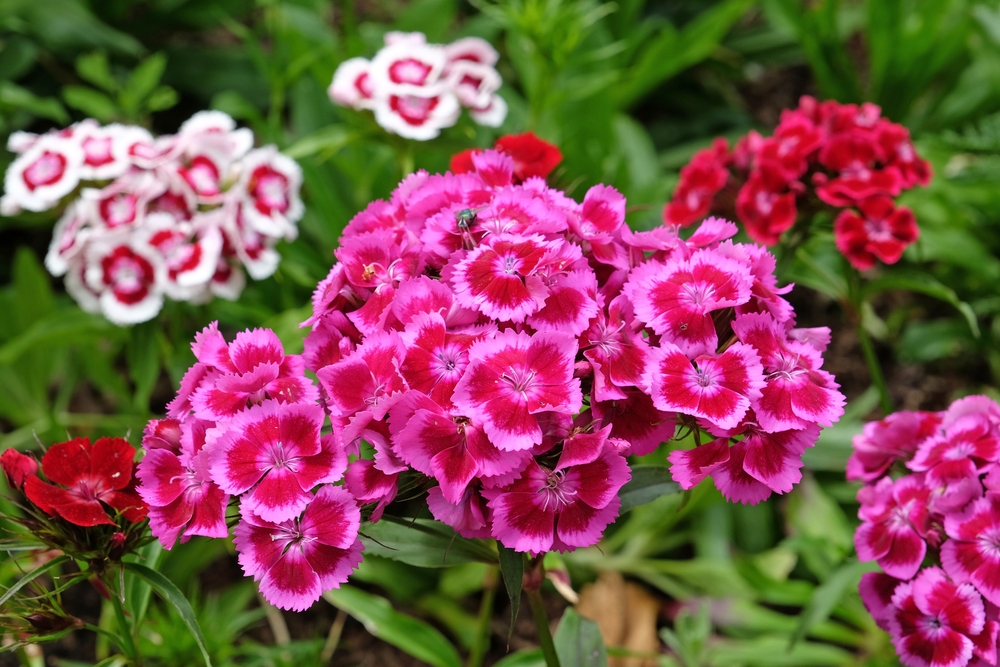
Dianthus grows between 6 to 12 inches tall, making it perfect for small spaces. Its flowers come in shades of pink, red, and white with a soft clove-like fragrance. Gardeners often plant them along borders or in containers. They bloom from late spring into summer, giving consistent color. This plant prefers well-drained soil and sunny locations.
Dianthus is ideal for small gardens because it remains low and compact. Its colorful blooms add charm without crowding other plants. The plant is also known to attract butterflies, adding life to the garden. With proper care, it will return each year with more flowers. This makes it a reliable choice for gardeners with limited space.
Creeping Phlox
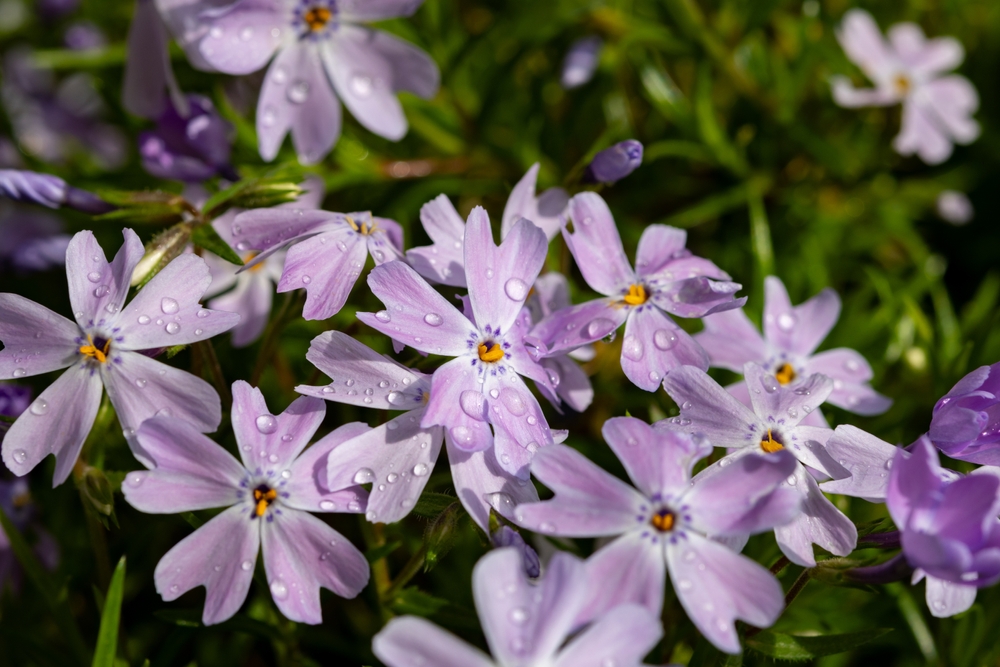
Creeping Phlox typically grows 4 to 6 inches tall, spreading across the ground like a colorful carpet. Its flowers cover the plant in pink, purple, or white shades during spring. It works well for edging pathways or filling in rock gardens. The dense growth helps prevent weeds from taking over. This plant thrives best in sunny areas with good drainage.
Creeping Phlox is valued in small gardens because of its low growth habit. It spreads neatly while staying close to the ground, making it a great filler. Its early blooms provide color before many other flowers appear. It requires little upkeep once established, which appeals to busy gardeners. This makes it both decorative and practical for compact spaces.
Heuchera (Coral Bells)
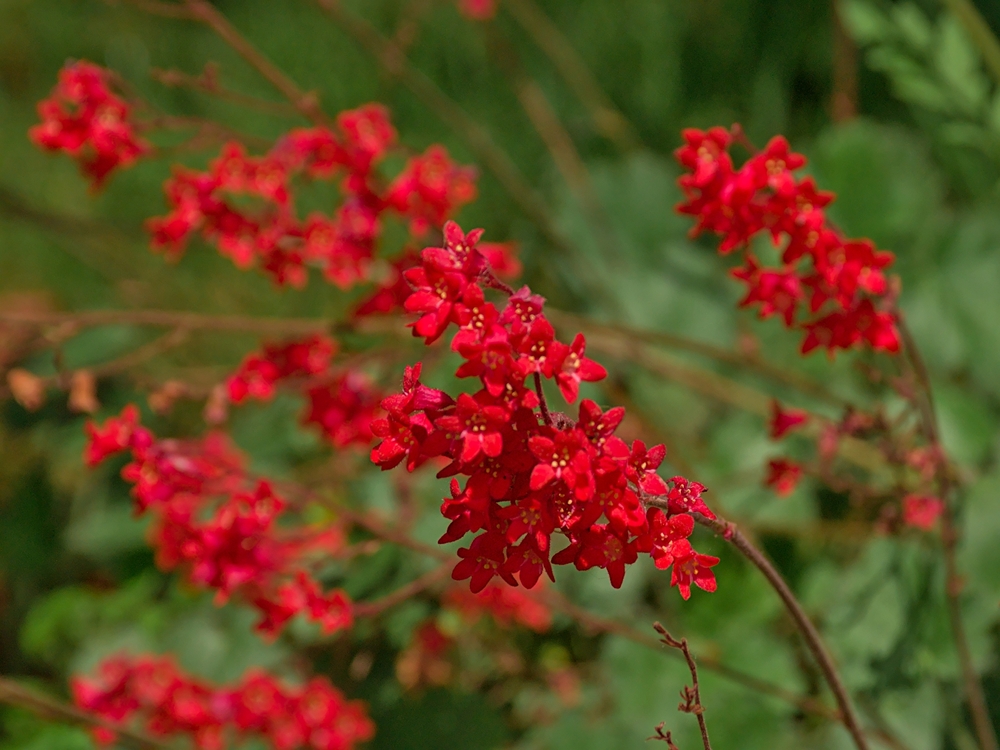
Heuchera grows about 12 to 18 inches tall, with rounded foliage in a variety of colors. The leaves can be green, purple, or even bronze, depending on the variety. Its delicate flowers rise slightly above the foliage in spring and summer. Heuchera thrives in partial shade, making it flexible in placement. It also works well in both borders and containers.
This plant is ideal for small gardens because its size stays manageable. The colorful foliage adds interest even when the plant is not in bloom. It can handle both sun and shade, making it versatile for mixed plantings. Gardeners enjoy how it blends with other perennials without taking over. This dependable plant creates texture and charm in compact spaces.
Pansies
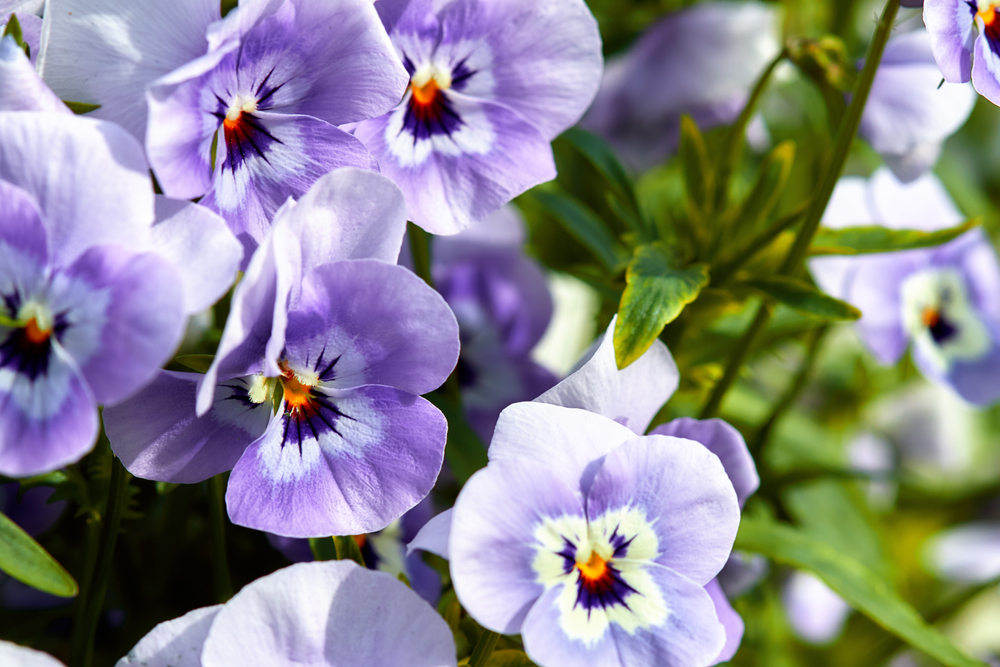
Pansies grow around 6 to 9 inches tall, producing cheerful flowers in a wide range of colors. Their blooms have distinctive faces that make them easily recognizable. These flowers do best in cooler weather, thriving in spring and fall. They prefer moist, well-drained soil and sunny spots. Pansies are often planted in clusters for maximum effect.
They are perfect for small gardens because they do not grow tall or spread aggressively. Their bright colors can highlight borders or containers instantly. Pansies are also easy to grow from seed, making them affordable for many gardeners. Although they are short-lived perennials in some regions, they return with the right care. Their small stature and lively color make them a favorite in compact areas.
Primrose
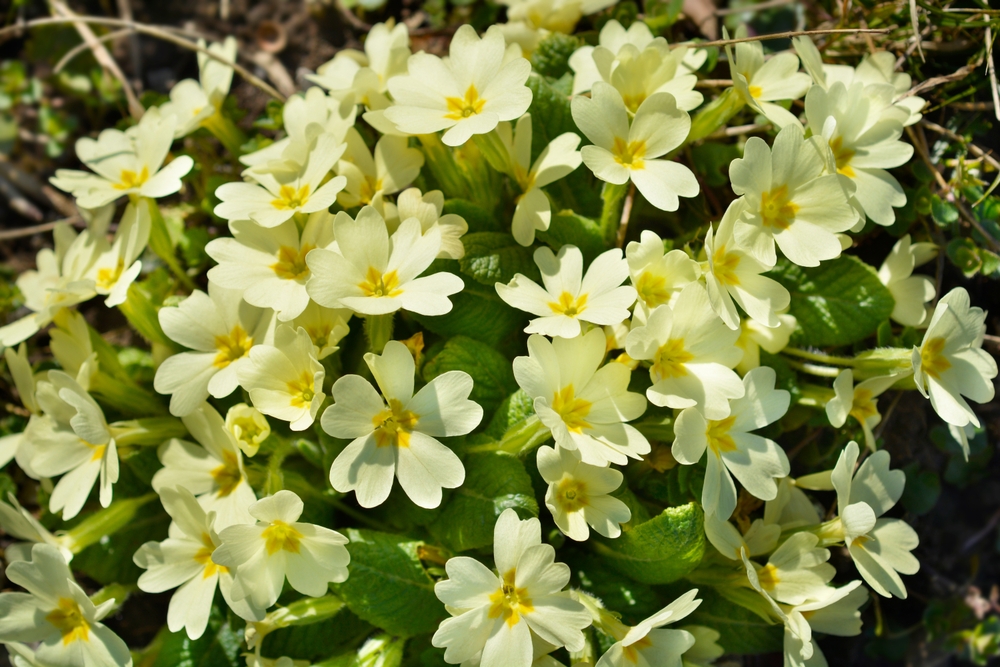
Primrose usually grows 6 to 12 inches tall with clusters of brightly colored blooms. The flowers can be yellow, red, purple, or white, depending on the variety. They appear early in spring, often one of the first signs of the season. Primrose enjoys moist soil and partial shade. It is often used to brighten shaded garden corners.
This plant is suited to small gardens because of its compact growth. Its early blooms bring life to the garden before many other flowers. Gardeners appreciate its ability to grow in less sunny areas. It can be placed in borders, rock gardens, or even containers. Primrose brings reliable color to small spaces every spring.
Campanula (Bellflower)
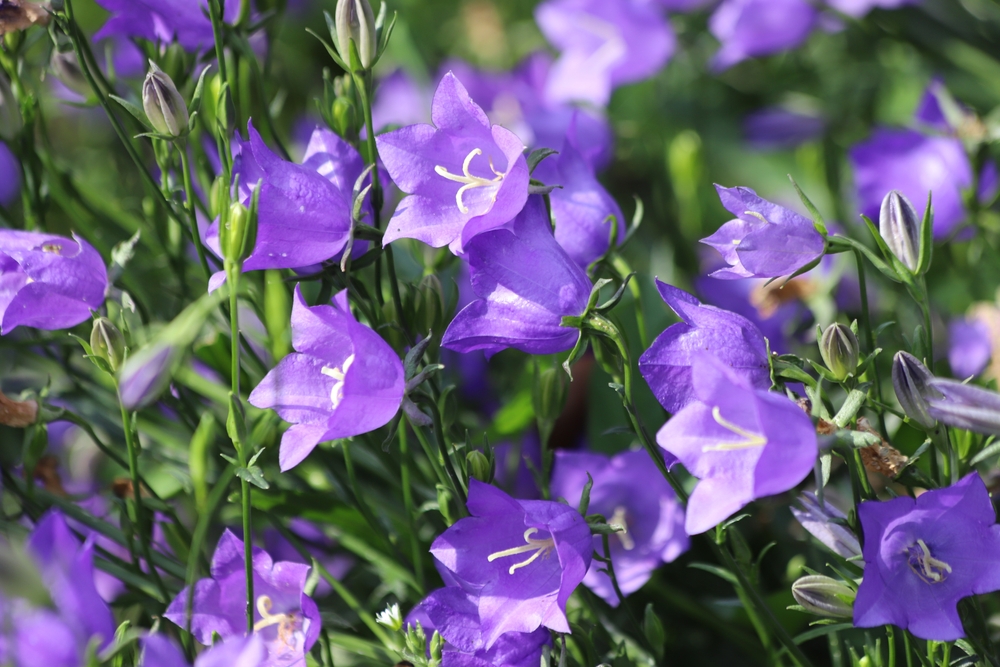
Campanula stays low, usually between 8 and 12 inches tall, though some varieties grow taller. The flowers are shaped like bells and come in shades of blue, purple, or white. They bloom through late spring and summer. Campanula prefers sunny spots but can tolerate light shade. It works well in borders and small patches.
Small gardens benefit from Campanula because it spreads modestly while staying compact. Its bell-shaped flowers add a delicate touch to tight spaces. This perennial is easy to care for once it is established. It brings color for weeks, making it reliable through the season. Gardeners enjoy its charm without worrying about it becoming overwhelming.
Forget-Me-Not
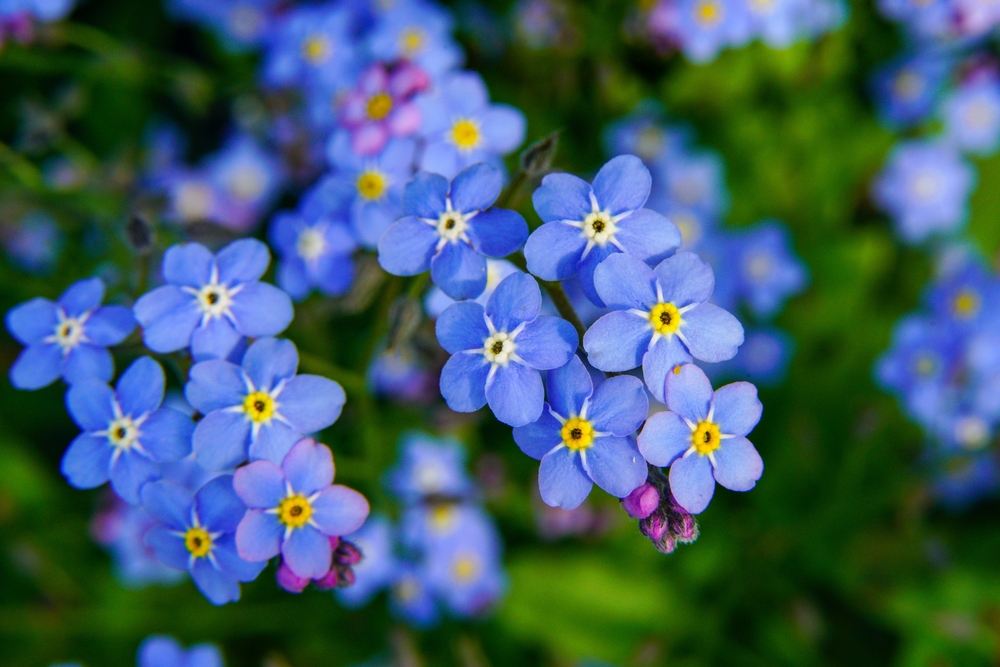
Forget-Me-Nots grow about 6 to 12 inches tall with soft blue flowers. Their small blooms appear in clusters during spring and early summer. They prefer moist, well-drained soil and shaded areas. The plants self-seed, allowing them to return year after year. Gardeners often plant them near walkways or shaded borders.
They are excellent for small gardens because of their gentle height and spreading habit. Their blue blooms bring a calming look to compact areas. Forget-Me-Nots mix well with taller plants, creating balance without crowding. They are also good for shady corners that need color. Their delicate flowers add charm in small garden designs.
Alyssum
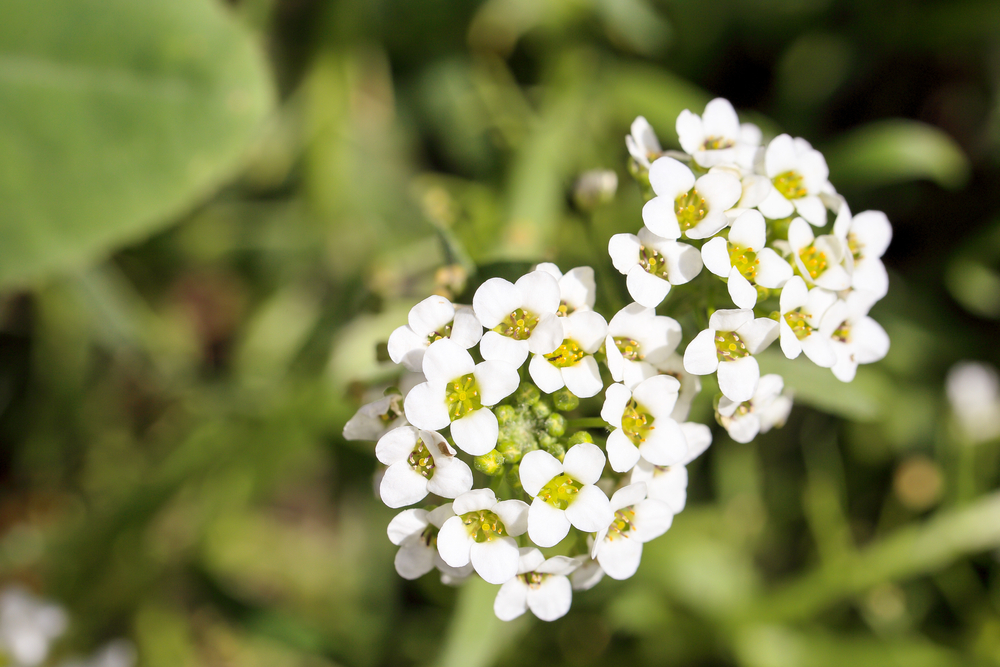
Alyssum is a low-growing perennial that stays between 4 and 8 inches tall. It produces clusters of tiny flowers in white, pink, or purple. The blooms release a sweet fragrance that attracts pollinators. Alyssum thrives in full sun and well-drained soil. It is often used in edging and container plantings.
Small gardens benefit from Alyssum because it spreads gently while staying low. The flowers create a soft carpet effect without being invasive. Its fragrance adds an extra layer of enjoyment to compact spaces. Gardeners often use it around patios or walkways for visual and fragrant appeal. Alyssum remains a popular choice for both beauty and practicality.
Rock Cress
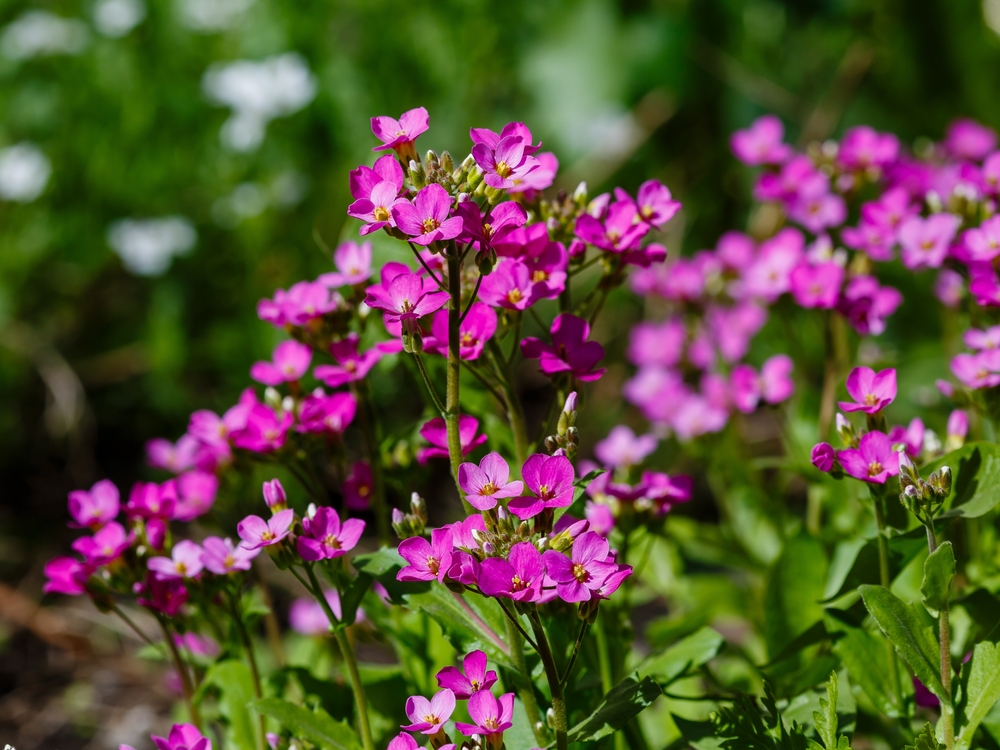
Rock Cress usually grows 6 to 9 inches tall, making it perfect for small spaces. It produces vibrant purple or pink flowers in early spring. The plant forms neat mounds that stay low to the ground. It thrives in full sun and prefers rocky or sandy soil. Rock Cress is often planted in rock gardens or along borders.
This plant is ideal for small gardens because of its compact form. It adds bright color early in the season, lifting the look of a space. Rock Cress spreads slowly, so it is easy to manage. Its flowers attract pollinators, which bring added activity to the garden. For tight spaces, this plant offers long-term value and beauty.
Veronica (Speedwell)
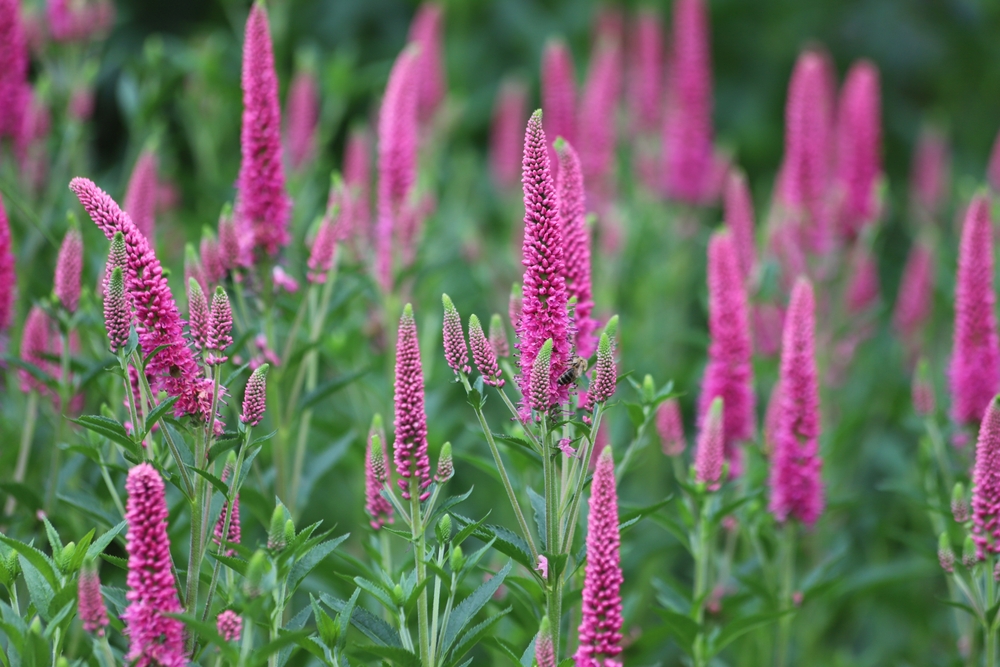
Veronica grows between 10 and 12 inches tall with spikes of blue, purple, or pink flowers. The blooms appear in late spring and last through early summer. Veronica thrives in sunny spots with well-drained soil. The plant has neat foliage that stays tidy even after the blooms fade. It works well in borders or small garden beds.
Veronica suits small gardens because it adds vertical color without overwhelming the space. Its flowers appear in dense spikes, drawing attention even in tight areas. The plant stays compact, so it pairs well with other low growers. Gardeners enjoy its long bloom time, which adds reliability to a planting plan. With minimal care, Veronica returns each year with fresh blooms.
Sedum (Stonecrop)
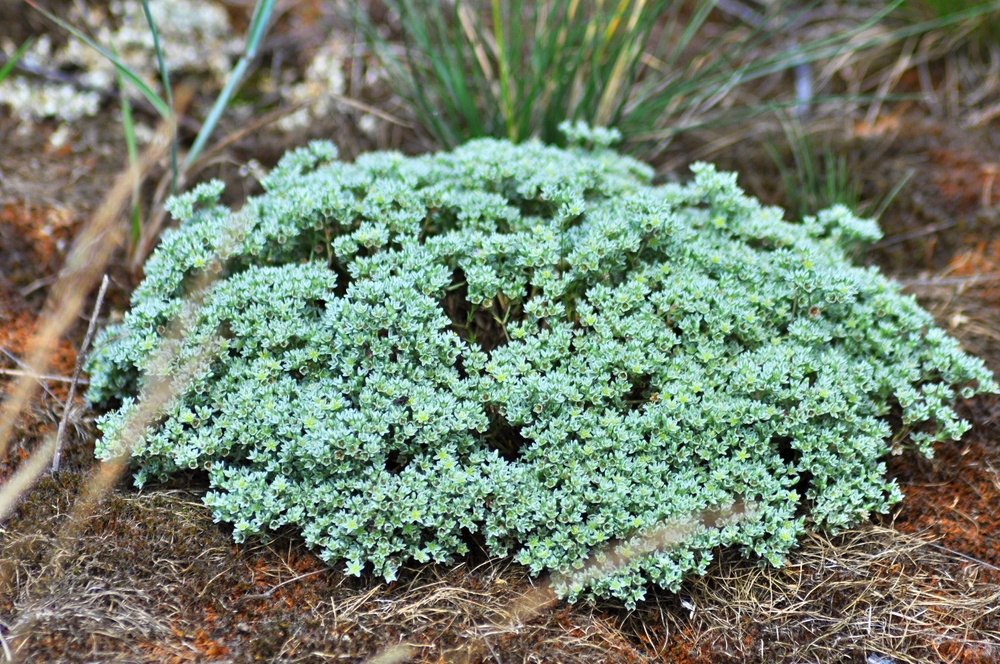
Sedum grows between 6 to 12 inches tall, depending on the variety. It has succulent leaves and star-shaped flowers in pink, yellow, or red. Sedum thrives in dry, well-drained soil and full sun. The plant is drought-tolerant and requires little care once established. It is commonly used in rock gardens and borders.
This plant is great for small gardens because it stays neat and low. The fleshy leaves give it a unique look compared to traditional flowers. It blooms late in the season, extending garden interest into autumn. Sedum also attracts pollinators, adding activity to the space. Gardeners appreciate its hardiness and long-lasting value.
English Daisy
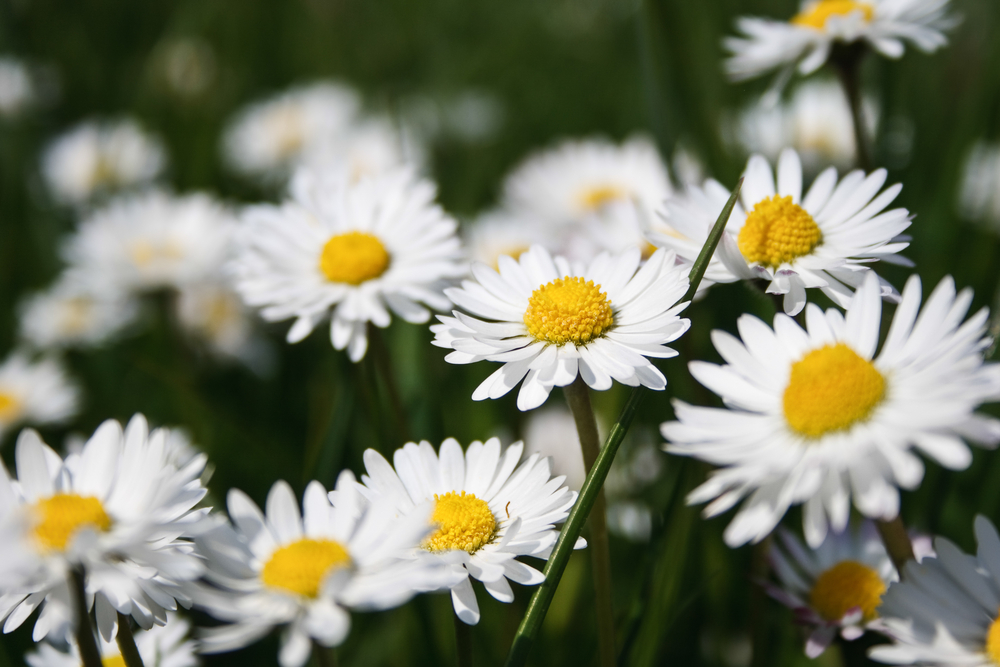
English Daisy grows 4 to 6 inches tall with rounded blooms in white, pink, or red. The flowers have yellow centers and appear in spring. This plant thrives in cool weather with moist soil. It is often used in borders, lawns, or small garden beds. English Daisy is a favorite for early-season color.
Small gardens benefit from English Daisy because of its tiny size and bright display. Its low growth allows it to fit neatly among other plants. The flowers are cheerful and easy to maintain. This plant can also self-seed, returning for many seasons. English Daisy adds charm to compact gardens in a simple way.
Hellebore
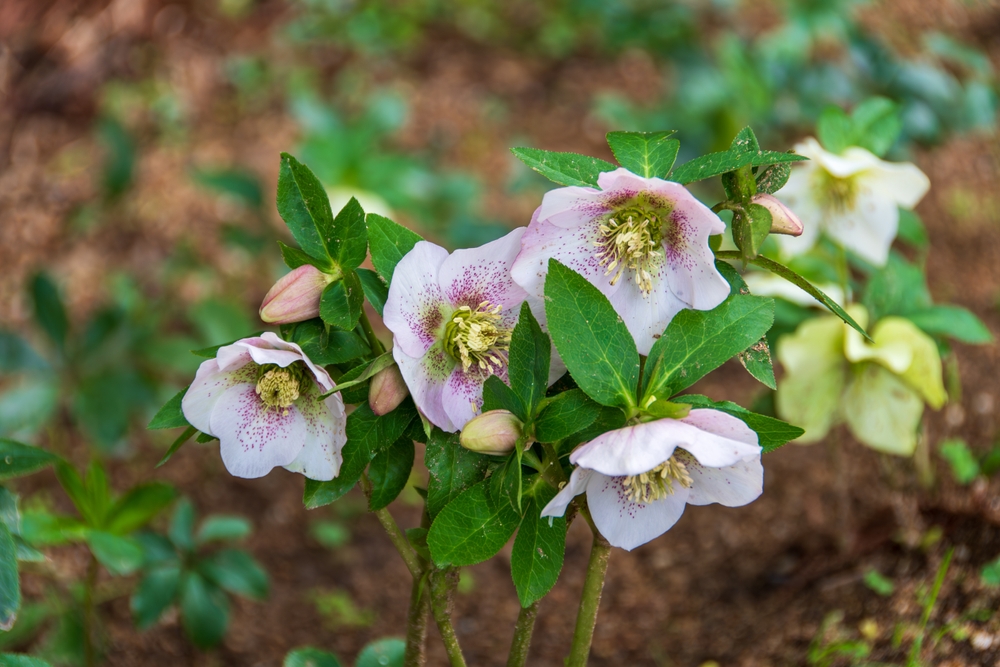
Hellebores grow between 9 and 12 inches tall, producing nodding flowers in shades of pink, purple, and white. They bloom in late winter or very early spring, often when snow is still on the ground. The foliage is glossy and attractive even after the flowers fade. They prefer partial shade and moist soil. Hellebores are long-lived perennials, making them dependable year after year.
This plant is ideal for small gardens because of its compact size and early bloom time. It brings life to the garden when few other plants are flowering. The flowers are unique in shape, adding interest to small borders. Gardeners value its hardiness and long bloom season. For shaded spaces, Hellebores provide reliable color and charm.
Candytuft
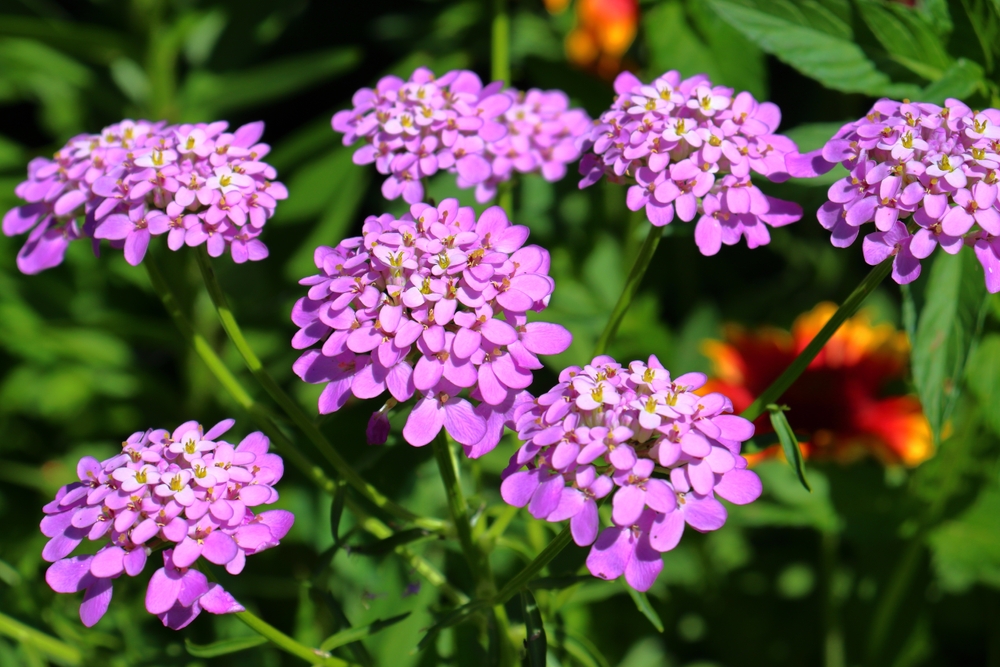
Candytuft grows about 6 to 12 inches tall, forming mounds of evergreen foliage. In spring, it produces clusters of white flowers that cover the plant completely. It thrives in sunny areas with well-drained soil. Candytuft is commonly used in edging or rock gardens. Its neat growth habit keeps it looking tidy year-round.
This plant is perfect for small gardens because it provides a fresh, clean look. The flowers are abundant and long-lasting, bringing brightness to compact areas. Its evergreen leaves keep the garden lively even when not in bloom. Candytuft does not spread aggressively, so it is easy to manage. This makes it a versatile and attractive choice for tight spaces.
This article originally appeared on Avocadu.
